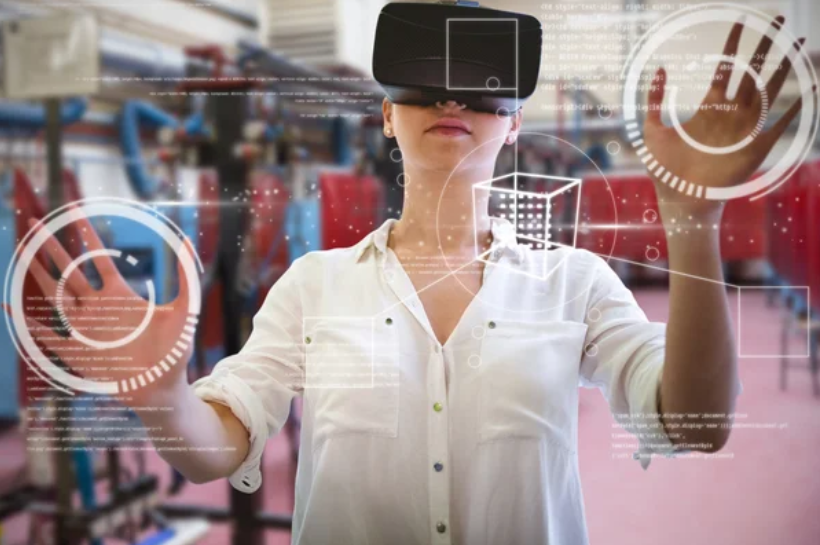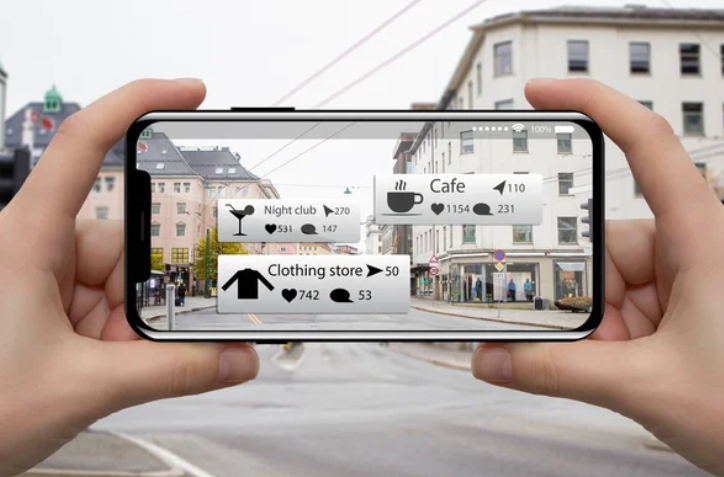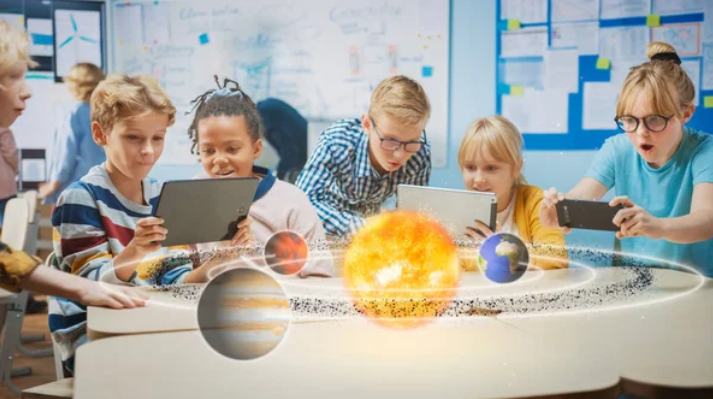The Role of Augmented Reality in Education

In recent years, technological advancements have brought about significant changes in various sectors, and education is no exception. One of the most intriguing innovations making its mark in the educational landscape is Augmented Reality (AR). It is revolutionizing the way students learn and engage with educational content, offering an immersive and interactive experience that goes beyond traditional teaching methods. In this article, we will delve into the role of Augmented Reality in education and its potential to reshape the future of learning.
What Is Augmented Reality?
Augmented Reality (AR) is a cutting-edge technology that blends the physical world with digital elements, enhancing our real-world experiences through the integration of computer-generated information. Unlike Virtual Reality (VR), which immerses users entirely in a digital environment, it overlays digital content onto the physical world, allowing people to interact with both the real and virtual realms simultaneously.
Collaborating with a virtual reality software development company can further enhance these immersive experiences.
The concept of Augmented Reality is not entirely new; it has its roots in early experiments and research dating back to the 1960s. However, recent advancements in hardware, software, and mobile technology have propelled it into the mainstream, allowing for a wide range of applications across industries, from entertainment and gaming to education, healthcare, manufacturing, and more.

This innovation leverages tools like smartphones, tablets, smart glasses, or dedicated AR headsets to combine digital information—like images, videos, or 3D models—with the user's present surroundings. This fusion is accomplished by employing cameras, sensors, and GPS to monitor the location and environment, guaranteeing a seamless alignment of digital elements with the tangible world.
In this experience, people can see and interact with digital overlays that appear as if they are part of their environment. For instance, pointing a smartphone at a historic monument might trigger a guide providing historical information, or viewing a real-world space through AR glasses might show virtual furniture overlaid onto a room to visualize how it fits.
Its impact is particularly notable in sectors like education, where it enhances learning by making abstract concepts tangible and immersive. In medicine, it aids in visualizing complex surgical procedures. In retail, it enables customers to try products virtually before purchasing. Architects and engineers use AR to visualize blueprints in real environments, and even art and entertainment industries incorporate AR to create interactive experiences.

As the technology continues to evolve, the potential seems limitless. From transforming the way we learn, shop, and experience our surroundings, to revolutionizing industries and shaping the future of human-computer interaction, this powerful tool merges our physical and digital realities, offering endless possibilities for innovation and advancement. In this rapidly changing landscape, keeping an eye on the price of Dogecoin and other cryptocurrencies becomes essential, as these digital assets can be both a store of value and a means of exchange in this increasingly digital world.
The Influence on Education
It is rapidly transforming the landscape of education by introducing inventive and immersive learning experiences. This technology offers educators new tools to engage students, enhance comprehension, and create memorable educational journeys. So, what it can offer?

- Interactive Learning Environments. It transforms traditional classrooms into interactive learning environments. Students can explore complex subjects, such as anatomy or astronomy, by interacting with 3D models and simulations. This hands-on approach deepens understanding and retention.
- Visualizing Abstract Concepts. It bridges the gap between abstract concepts and concrete understanding. Difficult-to-grasp ideas become tangible through visualizations. For instance, students can watch a chemical reaction unfold before their eyes or explore the solar system in a virtual space.
- Personalized Learning. This tool enables adaptive learning experiences tailored to individual needs. Through AR apps, educators can provide personalized content, catering to students' learning styles, paces, and preferences. This enhances engagement and student success.
- Gamified Education. Gamification motivates learning by incorporating game elements into educational content. This technology brings gamification to a new level by merging digital challenges with real-world environments. This approach boosts motivation and makes learning enjoyable.
- Virtual Field Trips. AR takes students on virtual field trips, transcending the limitations of time and location. History classes can explore ancient civilizations, and geography lessons can turn into global expeditions, enhancing cultural awareness.
- Language Learning. Language acquisition is enhanced by AR's ability to provide instant translations and pronunciations when students point their devices at objects or text. This real-world context improves language comprehension.
- Engagement and Active Learning. It captures students' attention and encourages active participation. The interactive nature of AR experiences fosters critical thinking, problem-solving, and collaboration.
- Accessibility and Inclusion. This resource can be tailored to suit diverse learning requirements. Students with a range of learning preferences, capabilities, and disabilities can interact with the material in manners that align with their individual strengths.
- Real-World Simulations. It offers safe environments for hands-on training. Medical students can simulate surgeries, and engineering students can experiment with prototypes, preparing for real-world scenarios.
- Innovative Assessments. Traditional assessments can be transformed using this resource. Students can demonstrate their knowledge by creating virtual projects, showcasing their understanding in creative and practical ways.
- Teacher Professional Development. This resource supports the training and growth of teachers. Educators can utilize it to simulate classroom management strategies, explore inventive teaching approaches, and enhance their proficiency.
- Future-Ready Skills. By engaging with AR in education, students develop skills in technology, critical thinking, problem-solving, and creativity—knacks that are crucial in our rapidly evolving digital world.
Incorporating Augmented Reality into education enriches the learning experience, making it more interactive, engaging, and effective. As technology continues to evolve, its role in education will likely expand, opening up new avenues for collaboration, exploration, and innovation in the classroom.
Overcoming Challenges
While this innovation holds immense potential for transforming schooling, its implementation comes with certain challenges that educators and institutions need to address. We gathered some of them here:
- Cost of Technology and Infrastructure and Compatibility. Implementing this invention often requires devices like smartphones, tablets, or AR glasses. These can be costly, and ensuring access for all students might be a financial challenge for schools and families. Moreover, applications demand robust internet connectivity and compatible devices. Schools must ensure that their infrastructure supports seamless experiences, which might require upgrades and investments.
- Content Development and Content Diversity. Creating high-quality content demands expertise in both education and technology. Developing interactive, accurate, and pedagogically effective AR experiences can be time-consuming and resource-intensive. The availability of educational materials across subjects and grade levels might be limited. Teachers might struggle to find appropriate information that aligns with their curriculum.
- Teacher Training and Pedagogical Integration. Educators need training to effectively integrate AR into their teaching methods. Some teachers might be unfamiliar with the technology, leading to resistance or inadequate utilization. Integrating this technology seamlessly into the curriculum and aligning it with learning objectives requires careful planning. Simply using it for the sake of novelty might not yield meaningful educational outcomes.
- Technical Glitches and Privacy Concerns. Like any technology, these apps can encounter technical glitches or compatibility issues, disrupting the learning experience and causing frustration. Plus these applications might collect data about students' interactions. Maintaining student privacy and ensuring data security becomes crucial, especially when dealing with minors. Schools need technical support systems in place to troubleshoot AR-related issues promptly. Lack of support can lead to disruptions in the learning process.
- Distractions and Problems with Inclusive Access. While this resource engages students, it can also lead to distractions if not used purposefully. Students might get absorbed in the novelty of the technology rather than focusing on the educational content. Students with disabilities might face challenges using AR, especially if the technology is not designed with accessibility in mind.
- Implementation Consistency. Maintaining a consistent level of implementation across different classes and teachers can be challenging. Discrepancies in the quality and quantity of AR experiences might arise.
- Lack of Research. As this resource is a relatively new technology in education, there might be limited research on its long-term impact on learning outcomes, making it challenging to gauge its effectiveness definitively.
Tackling these obstacles necessitates a joint endeavor involving educators, administrators, technology specialists, and policymakers. Through meticulous planning, suitable resources, and a dedication to effective teaching methods, these challenges can be surmounted, enabling this advancement to fully realize its potential as an instrument of transformation in education.
The Future of AR
The potential transformation that lies ahead for Augmented Reality (AR) is remarkable, set to redefine our interactions with emerging advancements, immerse us in our surroundings, and reshape a multitude of industries. With ongoing evolution within the sector, this groundbreaking concept is anticipated to play a pivotal part in crafting our day-to-day encounters. What awaits us in the future as a result of this phenomenon?
Everyday Integration
AR is moving beyond specialized devices and becoming an integral part of everyday devices like smartphones, glasses, and even contact lenses. This seamless integration will make the interactions more natural and accessible to a wider audience.
In the workplace, it will enhance productivity by providing real-time information overlays, assisting in tasks, and enabling remote collaboration. Industries like manufacturing, healthcare, and logistics will benefit from hands-free guidance and data visualization.
Education and Healthcare Evolution
This tool will revolutionize education by offering absorbing learning experiences, enabling students to explore historical events, conduct virtual science experiments, and interact with complex concepts. This will make education more engaging and effective.
Surgeons can use it to overlay medical data during procedures, aiding precision. AR-assisted diagnostics and therapy could become standard, improving patient outcomes and medical training.
Retail Transformation
It will revolutionize the retail experience, allowing customers to try products virtually, visualize how items fit into their spaces, and receive personalized recommendations based on their preferences.
Entertainment and Tourism Reinvention
This technology will create new dimensions in entertainment, blurring the lines between the digital and physical worlds. Interactive AR games, immersive storytelling, and live events will redefine entertainment experiences.
It will transform tourism with interactive guides, historical reconstructions, and language translations. Travelers can experience destinations in unprecedented ways.
Environmental Interaction and Sustainability Impact
This innovation can be harnessed to overlay digital information onto the environment, aiding in navigation, identifying landmarks, and providing real-time information about surroundings. It can raise awareness about environmental issues by overlaying data and visualizations related to pollution, deforestation, and climate change onto real-world scenes.
Social Interaction and Enhanced Personalization
This technology will redefine social interactions by enabling digital overlays in real-world conversations. Virtual avatars and shared experiences will bridge geographical distances. However, it'll also offer hyper-personalized experiences by analyzing user preferences and context to provide relevant information and assistance.
Design and Architecture
Architects and designers will use AR to visualize and manipulate digital models in physical spaces, enabling more effective design processes and client interactions.
Advertising and Marketing
This development will create interactive and personalized advertising experiences. Customers can try products virtually before making purchasing decisions.
Summing Up
In conclusion, Augmented Reality is revolutionizing education by creating immersive, interactive, and engaging learning experiences. This technology empowers students to explore, create, and understand complex concepts in ways that were once unimaginable. While challenges exist, the benefits far outweigh them, promising a future where education transcends boundaries and embraces the limitless possibilities of technology.